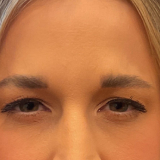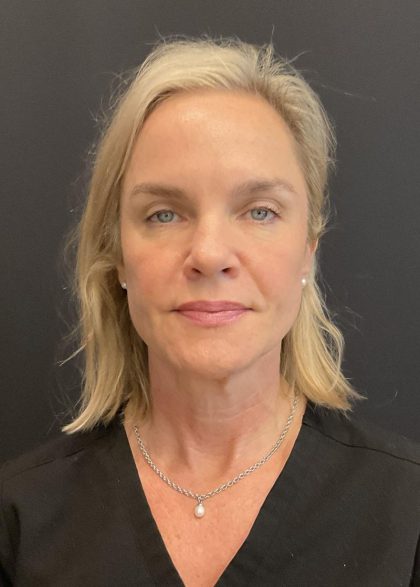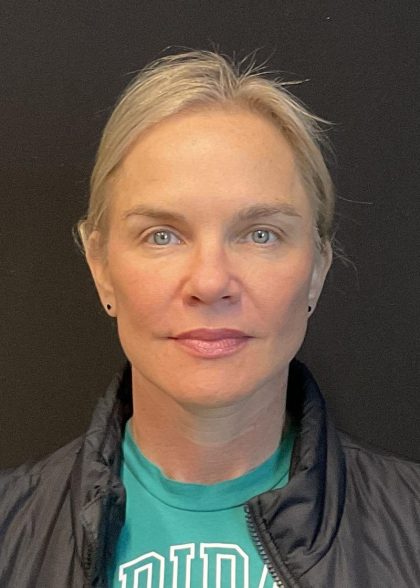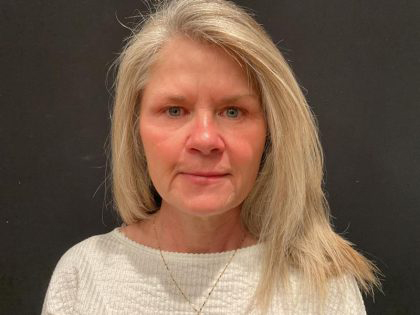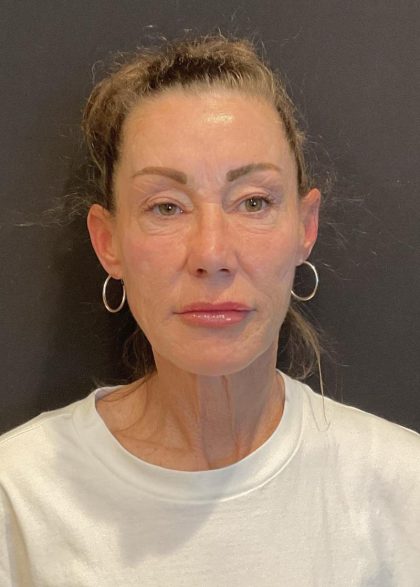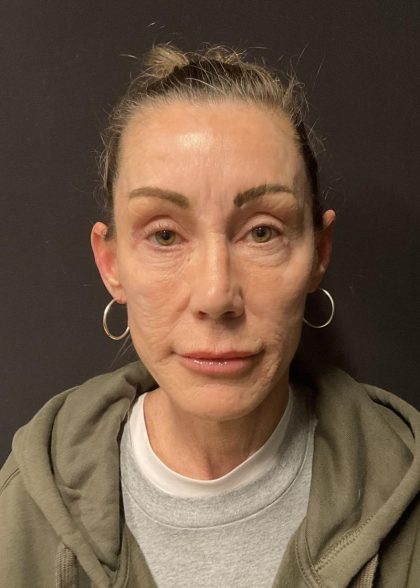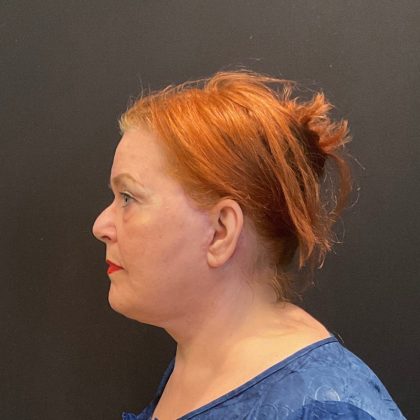Facelift & Necklift
Consultations offered at our three convenient locations in Austin, TX, San Antonio, TX and Westlake Hills, TX

A facelift, or rhytidectomy, is a procedure that restores a more youthful contour to the lower half of the face. As people age, the skin becomes lax, and facial volume loss becomes more apparent. For many, this results in deeper wrinkles, folds, and unwanted creases.
Before and After Photos
Modern facelift approaches are designed to promote natural-looking results by modifying underlying tissues beneath the skin. This way, there is no risk of creating the dreaded “windswept” appearance. Instead, patients can enjoy age-defying results that improve their facial profile. Most importantly, surgeons make the incision lines surrounding the outlines of each ear and within the hairline, so any scarring is extremely subtle and easy to hide.
At Austin Plastic Surgeon, our team of experienced surgeons and professionals can help you attain elegant, rejuvenated results with advanced facelift methods. From the time of your first appointment with a board-certified surgeon to the last day of recovery, we work to be transparent and educational while delivering the best surgical care possible. To get started with us today, get in touch with one of our Texas offices by calling one of the phone numbers below or using our contact form. We will be happy to guide you through the next steps of your facial transformation.
Contents
Overview of the Facelift
A facelift involves elevating the SMAS (superficial musculoaponeurotic system)- a thin sheet of muscle and fibrous tissue beneath the skin. This tissue was first discovered in 1976, revolutionizing the way surgeons performed facelifts and promoting longer-lasting results. Before this milestone, surgeons could only attempt to create such transformative changes by trimming fat along the jawline and chin and tightening the superficial layer of skin.
In the early 1980s, Dr. Sam Hamra introduced the “tri-plane rhytidectomy” that involved methods of improving the contours of the neck, but these procedures did not correct midface laxity or nasolabial folds that most often appear as the first sign of aging. (1)
In 1989, newer facelift research came about that addressed these particular cosmetic issues, which led to the development of a facelift method later coined the deep plane facelift. Dr. David Furnas pioneered the studies behind this particular technique- one that involves releasing certain facial ligaments and other tissues beneath the SMAS layer. (2) With this procedure, surgeons must lift both the SMAS and the skin as one unit. Many surgeons find that deep-plane facelifts and SMAS-only facelifts produce the same quality results for most patients.
Today, surgeons can access the SMAS layer through incisions of only a couple of inches in front of and/or behind each ear. To remove more lax skin and prevent distortion in the sideburn area, surgeons will sometimes extend the incision into the hairline. Deep plane approaches with vertical vectors address the causes and effects of facial aging with the gravity-driven downward slide of soft tissue descent. The tissue is lifted in an upward direction for a natural appearance.
Benefits of Facelift Video
Aesthetic and Surgical Benefits
Facelifts are designed to help you turn back time on your appearance- not change your natural beauty. Your surgeon will cater to your unique aesthetics and facial structure. A facelift at Austin Plastic Surgeon includes other benefits such as the following:
- It can smooth out sagging jowls, allowing for a more defined jawline.
- Some techniques create more definition in the cheekbone area.
- It can eliminate the drooping skin just under your chin and upper neck area.
- It can reduce prominent nasolabial folds that inhibit the contours of the lower cheek area.
- With the alteration of the SMAS layer, the procedure creates even-looking results that do not appear unnaturally “pulled” or “overdone”.
- A facelift is easily combined with a neck lift to reduce the appearance of a “double chin” and so-called “turkey neck”.
- On average, facelifts sustain results for about 12 years. (3)
- At Austin Plastic Surgeon most facelifts are performed using careful and custom-tailored general anesthesia. This permits a comprehensive and comfortable approach. Some procedure methods grant the surgeon the ability to perform it using just local anesthesia and sedative medication. A consultation can help determine the best approach for you.
- Most patients are surprised at how minimal pain can be.
Personal Consultation
During your consultation, your Austin Plastic Surgeon will evaluate your facial tissue and your specific signs of aging and discuss the facelift approaches that will best fit your unique aesthetic. They will answer your questions regarding the procedure and give you in-depth information on preparation, the procedure itself, and the recovery and downtime involved. They will also give you an unbiased overview with all of the pros and cons to consider.
To request your facelift consultation today, call one of our locations listed below or inquire with our short online contact form.
If you would like to learn more about the other options we offer at our practices, take a look through our blog or ask one of our team members.
Preparation
Like any other invasive surgery, the facelift requires adequate preparation. Taking certain steps can also ease the recovery process and make it more comfortable, which is your surgeon’s goal. For this reason, we suggest planning ahead in the following ways:
- Ask someone to be your caretaker. During the first 1 to 2 days of recovery, you will need someone to drive you home, monitor you, and drive you to your follow-up appointment.
- Prepare your recovery area. Make sure that your recovery area is comfortable and has everything you need (medications, snacks, entertainment, etc.).
- Complete any chores ahead of time. During the first few weeks of recovery, you will not be able to perform much physical activity.
- Stop taking anti-inflammatory medication. Your surgeon will tell you when to stop taking aspirin, Advil, etc.
- Keep hydrated. Water is an important component that the body uses for healing and helps ensure a smooth recovery.
- Pick up any pain medications. By getting your medication ahead of time, you won’t miss any doses or have to stop at the pharmacy on your way home from surgery.
- Avoid drinking alcohol. You should stop drinking alcohol at least 14 days before your procedure. Alcohol can increase your risk of excessive bleeding.
- Stop smoking. Since nicotine can interfere with the body’s healing processes and increases the risk of surgical complications, you should stop smoking for at least six weeks before your procedure and for four weeks following your procedure.
- Prep nutritious meals. You will need to rest during the first couple of weeks, so you should prepare healthy food ahead of time so you do not have to cook.
On the day of your surgery, make sure to wear comfortable, loose clothing– preferably a zip-up hoodie or buttoned shirt. Your treatment area will be sensitive after the procedure, so you want to avoid pulling any clothing over your head.
Procedure Options
To begin the procedure, we will give you anesthesia (general anesthesia or sedation with local anesthesia) to make the procedure comfortable. Your surgeon will then place incisions behind or directly in front of each ear and may extend them into the hairline. The exact location of these incisions varies from patient to patient, but your surgeon will inform you of the placement before your procedure. Your surgeon will use these incisions to remove loose skin and tighten underlying facial tissues. After the procedure is complete, they will close your incisions and apply a face wrap.
Modern facelift techniques are performed as outpatient procedures. If you believe you will need extra help at home our team can arrange for a variety of medical home care assistance options.
Full Facelift v.s. Mini Facelift
In general, the difference between a full facelift and a mini facelift is the amount of work done on the internal facial tissue. Mini facelifts are better suited for younger patients, while full facelifts are more equipped to resolve a broader range of aging concerns. While many patients perceive a mini facelift as a procedure that promotes less scarring or a shorter recovery, this is not always true. The most notable difference between the two procedures is how much the surgeon can contour the neck; the mini facelift does not affect tissues below the face. The results of a full facelift also tend to last longer than a mini facelift.
Many patients come to the consultation with the idea that a mini facelift is more natural because “less” is done. In reality, if a mini facelift is performed on a patient who actually requires a more comprehensive facelift, the results are often less natural because important areas are left untreated. This can result in a lack of harmony and a more surgical look. Mini facelifts are best for young patients in their late 30s and early 40s and less often for patients beyond the mid-40s.
Most patients choose to include muscle plication or transposition (upward suspension) of the superficial platysma muscle of the neck. This is a superficial muscle that does not affect head movement, but with elevation, it can dramatically reduce the appearance of a double chin and sagging skin in the area.
Deep Plane Neck Lift
Deep plane procedures can provide natural and youthful contouring in the neck and jawline. In deep plane neck techniques, surgeons contour excessive glands, deep fat, and muscles beneath the superficial platysma. At Austin Plastic Surgeon our doctors are experienced in these advanced procedures. They can assist you in choosing the best option for you.
Before and After Photos
Recovery and Results
After your procedure, you will still feel tired from the anesthesia, so you will need someone to take you home and monitor you for at least 24 hours. You will return to our office for an appointment in the three days following your surgery so that your surgeon can remove the face wrap. They may then place a simple band to support your neck and minimize swelling; though, you will be able to remove this when showering.
For the first week after surgery, you should relax as much as possible and avoid strenuous activity. While it is important to get up and walk around several times per day to help blood flow, you should avoid any heavy lifting, straining, or running. Your surgeon will remove your sutures at a follow-up appointment in about 7 days. After this appointment, you will be able to use makeup to cover any residual swelling and bruising.
Within the first two weeks, these initial side effects will subside. While you will be feeling much better, you will still be healing and should continue to avoid working out until after the three-week mark. Protecting your skin with daily sunscreen, pursuing a healthy lifestyle, and avoiding smoking are essential to maintaining your results. Most patients feel as if they look normal and natural between 2 and 4 weeks. By the end of 12 weeks, you will be able to enjoy your newly rejuvenated contours for a decade or more!
Complementary Procedures
Eyelid Lift
Frequently combined with a facelift, a blepharoplasty, or eyelid lift, is a surgical procedure that specifically targets the eyelids to address these aesthetic concerns and restore a more youthful and vibrant appearance. By removing excess skin and fat, and tightening the underlying muscles, blepharoplasty can enhance the contours of the eyes, boost self-confidence, and create a more harmonious facial aesthetic.
Brow Lift
A brow lift, also known as a forehead lift, is a surgical procedure performed to elevate the position of the eyebrows and rejuvenate the appearance of the upper face. It addresses concerns such as sagging brows and forehead lines by repositioning the eyebrows and smoothing out furrows, giving the upper face a smoother, more youthful appearance.
Cost of a Facelift in Austin
The cost of your facelift will depend on the type of anesthesia used, the surgical techniques employed, follow-up appointments, post-operative prescriptions, and other surgical fees. Austin Plastic Surgeon is committed to being transparent with our patients and lists the approximate cost of each plastic surgery on our pricing page. Our goal is to ensure our prices reflect our surgeons’ attentiveness and adherence to the latest safety guidelines.
We want you to feel confident and excited about your facial revitalization. To speak with our team today, contact the office nearest you or use our online form, and we can help you find the consultation date and time that works well for you.
At Austin Plastic Surgeon we pride ourselves in using the most modern and advanced techniques. We have special training in facelifting and routinely attend high-level educational conferences to continue to refine our skills. We offer an elevated form of face and neck lift with profound and natural results.
Your youthful face and neck transformation is our passion. Come in for a consultation and experience the difference.
References
- Yang AJ, Hohman MH. Rhytidectomy. PubMed. Published 2021. https://www.ncbi.nlm.nih.gov/books/NBK564338/
- Barrett DM, Casanueva FJ, Wang TD. Evolution of the rhytidectomy. World Journal of Otorhinolaryngology – Head and Neck Surgery. 2016;2(1):38-44. doi:https://doi.org/10.1016/j.wjorl.2015.12.001
- Sundine MJ, Kretsis V, Connell BF. Longevity of SMAS facial rejuvenation and support. Plastic and Reconstructive Surgery. 2010;126(1):229-237. doi:https://doi.org/10.1097/PRS.0b013e3181ce1806



